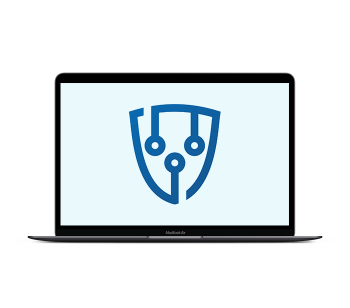Technical professionals. Trusted advisors. Certified expertise.
Mobility-Infrastructure

-
Over-The-Air encryption, to ensure traffic is protected in transit,
-
User Authentication, to ensure an authorized user is accessing the network, and
-
Network Authentication, to ensure the user is connecting to the real network (and not an evil twin network).
-
Device PIN or Passcode: The most basic security for any device, iOS supports either a simple 4-digit PIN or full alphanumeric passphrase. Either way they tie into the Data Drotection and device wipe features.
-
Passcode Wipe: When a PIN or passphrase is set, if the code is entered incorrectly enough times the device can erase all user data (this is based on the encryption features discussed next).
-
Remote Wipe: iOS supports remote wipe via Find My iPhone and Exchange ActiveSync. Of course the device must be accessible on the Internet to receive the wipe command.
-
Geolocation: The device’s physical location can be tracked using location services, which are part of Find My iPhone and can be incorporated into third-party applications.
-
VPN and on-demand VPN: Virtual private networks can be activated manually or automatically when the device accesses any network service. (Not all VPNs support on-demand connection.)
-
Configuration Profiles: Many of the security features, especially those used in enterprise environments, can be managed using profiles installed on the device. These include options far beyond those available to consumers configuring iOS casually, such as restricting which applications and activities the user can access on the phone or tablet.
Locations
New York
Connecticut
Florida
Louisiana
Chicago
Corporate Headquarters
New York
80 Orville Drive Suite 100
Bohemia, NY 11716
Tel: (866) 518-9672
This email address is being protected from spambots. You need JavaScript enabled to view it.
Connecticut
65 High Ridge Road #510
Stamford, CT 06905
Tel: (866) 518-9672
This email address is being protected from spambots. You need JavaScript enabled to view it.
Florida
3321 SW 194th Terrace
Miramar, FL 33029
Tel: (866) 518-9672
This email address is being protected from spambots. You need JavaScript enabled to view it.
Louisiana
218 Barksdale Drive
Broussard LA 70518
This email address is being protected from spambots. You need JavaScript enabled to view it.
Chicago
4 Knollwood Place
Joliet, IL 60433
This email address is being protected from spambots. You need JavaScript enabled to view it.
London
10 Grosvenor Court
Rayners Road
London SW15 2AX UK
© Copyright 2023, HCS Technology Group. All Rights Reserved.
